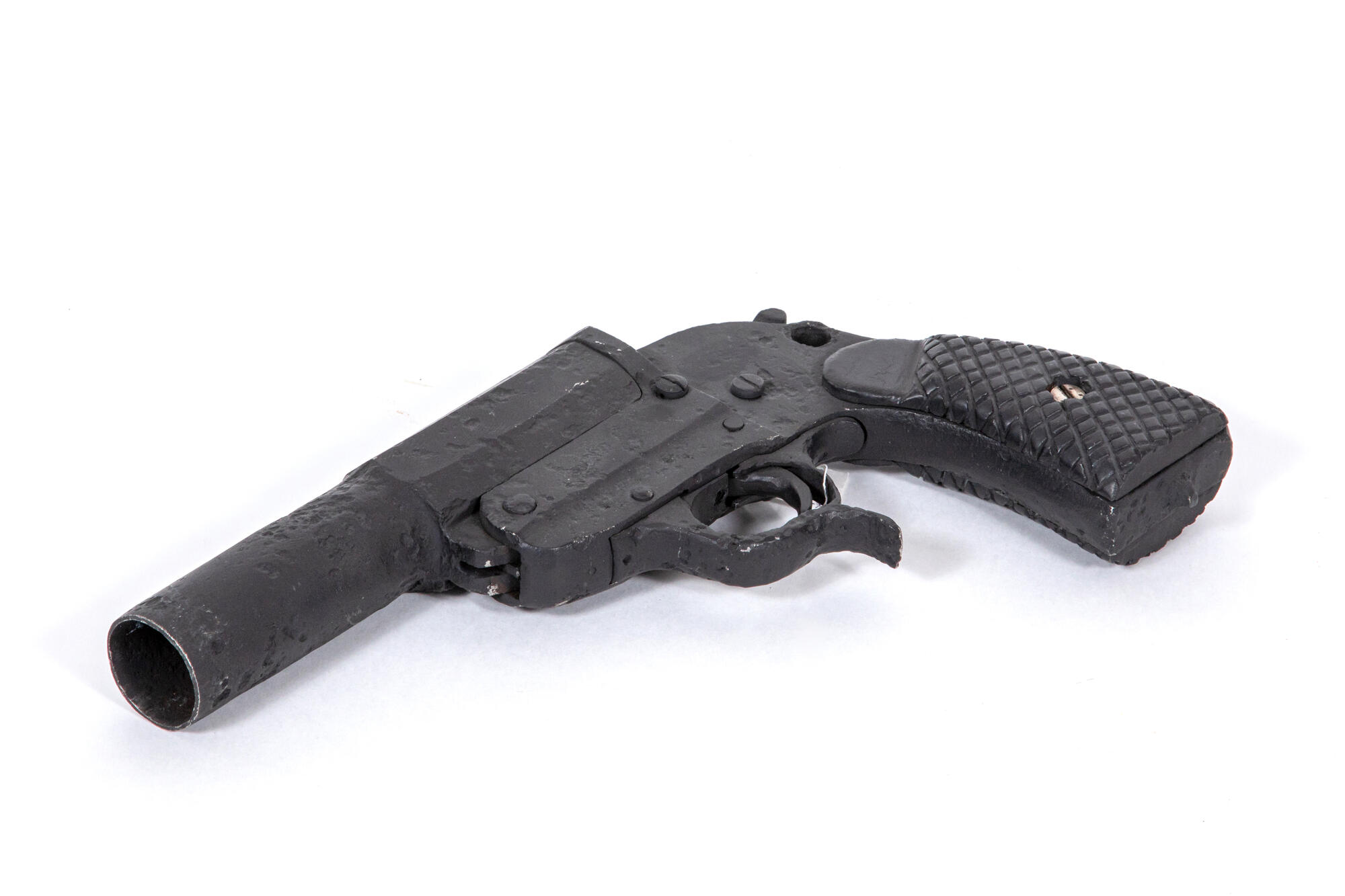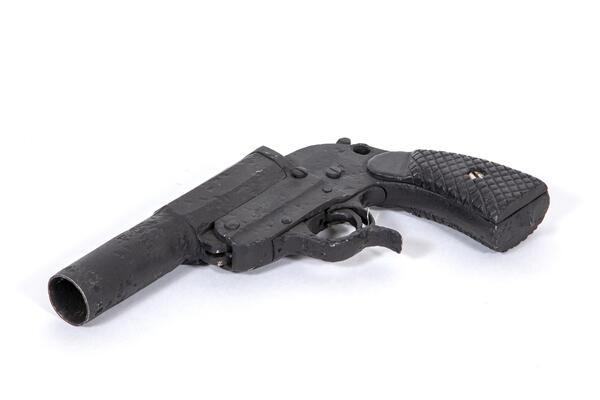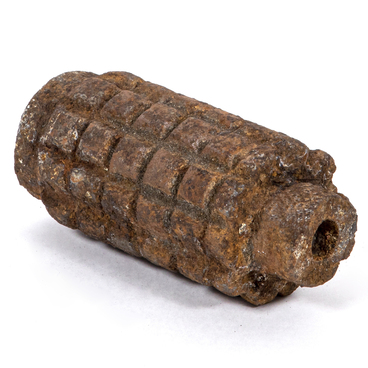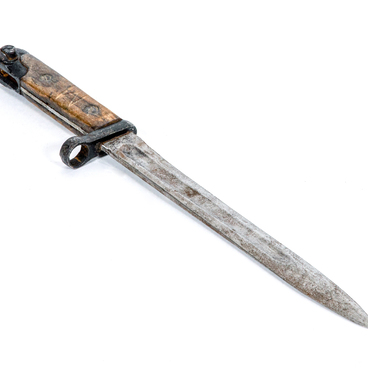Before and during World War II, the German Army used signal and flare pistols, or flares, which were produced separately for the Wehrmacht, the Luftwaffe, and the Kriegsmarine — the navy. Wehrmacht soldiers used the Walther Leuchtpistole 28 (Leu.P-28), a manual non-automatic pistol developed by gunsmith Fritz Walther back in 1928, to produce signals.
The Leu.P-28 was a signal weapon, designed only to produce light, smoke, or sound signals. Since the ballistic requirements for pyrotechnic projectiles were not as demanding as those for bullets, buckshot, or shotguns, the signal pistol was quite simple. The Leu.P-28 had a short, smooth hinge barrel with no rifling inside and a bolt with a lever at the bottom in front of the trigger guard.
By pulling the lever, the shooter separated the barrel and the bolt, manually loaded one signal cartridge, and returned the barrel to its place. The pistol was locked with the lever mounted above the pistol grip.
At the top of the frame was a hole for attaching a removable stock. Grip jaws were secured with a bolt and nut. A diagonal notch in the form of quadrangles prevented the gun from sliding in the hand. The main parts of the signal pistol — the frame and barrel — were made of steel. The flare gun weighed about 1.3 kilograms.
When shot, the pyrotechnic projectile moved down the barrel with either a larger or smaller gap. Elastic felt wadding was used for obturation — the action of blocking the barrel by a projectile in such a way, that the powder gases expand behind it and give it velocity. Due to this wadding, the shot was safe, and the pistol did not require additional polishing of the inside of the barrel.
In 1942, German gunsmiths developed the Kampfpistole (combat pistol) and the Sturmpistole (assault pistol) based on the Leu.P-28 flare gun. To shoot live ammunition, a rod was inserted into the barrel; without it signal cartridges could also be used. Such weapons were marked with the letter Z on the left side of the breechloader.
The Leu.P-28 was a signal weapon, designed only to produce light, smoke, or sound signals. Since the ballistic requirements for pyrotechnic projectiles were not as demanding as those for bullets, buckshot, or shotguns, the signal pistol was quite simple. The Leu.P-28 had a short, smooth hinge barrel with no rifling inside and a bolt with a lever at the bottom in front of the trigger guard.
By pulling the lever, the shooter separated the barrel and the bolt, manually loaded one signal cartridge, and returned the barrel to its place. The pistol was locked with the lever mounted above the pistol grip.
At the top of the frame was a hole for attaching a removable stock. Grip jaws were secured with a bolt and nut. A diagonal notch in the form of quadrangles prevented the gun from sliding in the hand. The main parts of the signal pistol — the frame and barrel — were made of steel. The flare gun weighed about 1.3 kilograms.
When shot, the pyrotechnic projectile moved down the barrel with either a larger or smaller gap. Elastic felt wadding was used for obturation — the action of blocking the barrel by a projectile in such a way, that the powder gases expand behind it and give it velocity. Due to this wadding, the shot was safe, and the pistol did not require additional polishing of the inside of the barrel.
In 1942, German gunsmiths developed the Kampfpistole (combat pistol) and the Sturmpistole (assault pistol) based on the Leu.P-28 flare gun. To shoot live ammunition, a rod was inserted into the barrel; without it signal cartridges could also be used. Such weapons were marked with the letter Z on the left side of the breechloader.



